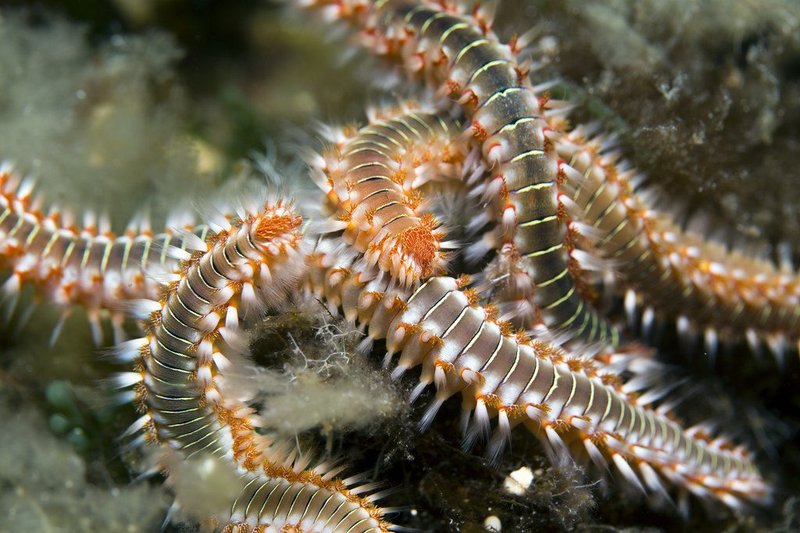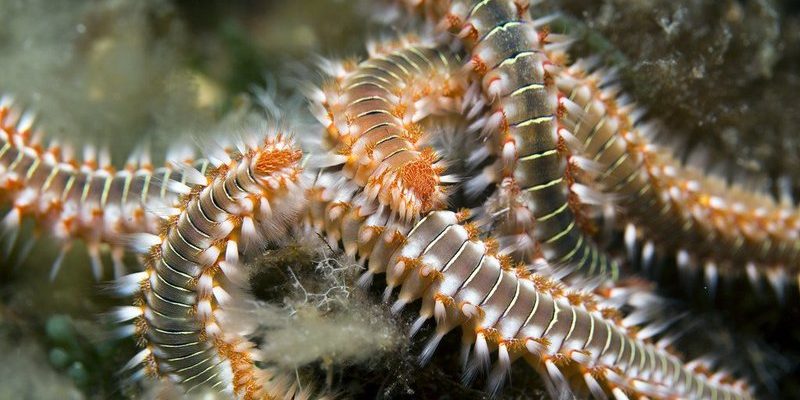
Think of bristle worms as the small weeds in your garden. At first, they may seem harmless, but if left unchecked, they can overrun the place. When you’re starting out with a marine tank, especially if you’re using live rock or sand, it’s crucial to manage potential outbreaks early on. With a little knowledge and proactive steps, you can keep your tank healthy and beautiful.
In this guide, we’ll break down how to handle bristle worm outbreaks effectively during your tank setup. We’ll cover what bristle worms are, how to identify them, and offer strategies for managing them, whether they’re just a few or a full-on invasion. So grab a cup of coffee, and let’s dive in!
What Are Bristle Worms?
Bristle worms are part of the polychaete family of worms and can be a common sight in marine aquariums. They often show up in live rock or sand, which is what makes aquarium setups so interesting. Picture them as the scavengers of your tank, feasting on detritus and leftover food.
While some aquarium enthusiasts might appreciate their role in breaking down waste, others can find them a nuisance. There are many species of bristle worms, but the ones that often cause trouble in tanks are the large ones, sometimes growing over a foot long. These guys can reproduce quickly if conditions are right, and that’s where the trouble begins.
Here’s the thing: while some bristle worms can be beneficial, a sudden outbreak can mean trouble. Too many can disrupt your tank’s balance and lead to problems like overcrowding and poor water quality. So if they show up in your new tank setup, it’s essential to act quickly.
Identifying Bristle Worms
Recognizing bristle worms isn’t too complex, but it’s crucial for effective management. They tend to have elongated bodies covered with little bristles that can give them a spiky appearance. These bristles are a significant feature, serving as their name suggests. But don’t be fooled; while they look fierce, bristle worms are generally harmless to fish and corals.
You might spot them at night, as they’re primarily nocturnal. They tend to come out when the tank lights are off, so consider doing a little tank watching after dark. Keep an eye out for:
- Length: They can range from a few inches to over a foot.
- Color: They’re often brown, green, or reddish, blending into the sand or rock.
- Movement: They have a wriggly, snake-like motion that can be quite interesting to watch.
If you notice a few bristle worms here and there, don’t panic just yet! It’s the mass numbers that can lead to issues, so monitor them closely as your tank matures.
Causes of Bristle Worm Outbreaks
Understandably, you might be wondering why bristle worms suddenly show up in your aquarium. There are a few primary reasons they might become more visible or get out of hand.
One major factor is **excess nutrients** in the water. If you’re overfeeding your fish, their uneaten food can become a buffet for bristle worms. Similarly, a lack of proper filtration can cause waste to accumulate, creating an environment where these worms thrive.
Another cause is the type of substrate you use. Live rock and sand, while great for biological filtration, can already harbor bristle worm eggs. So if you’re setting up a tank for the first time, it’s important to buy high-quality materials.
Lastly, the overall **water quality** plays a huge role. Bristle worms tend to flourish in tanks with poor water conditions. Regular testing of parameters like ammonia, nitrates, and phosphates can help you stay on top of potential outbreaks.
Preventing Bristle Worm Outbreaks
Now that you know what leads to bristle worm outbreaks, let’s talk about prevention. Just like with any pest control strategy, it’s better to prevent than to cure. Here are some actionable tips to keep your tank clear of pesky bristle worms:
1. **Control Feeding**: Make sure to feed your fish only what they can eat in a few minutes. Remove any uneaten food promptly to limit excess nutrients in the tank.
2. **Choose Quality Substrates**: If you’re using live rock, make sure it’s been properly cured and is free of unwanted hitchhikers. A reputable source can make all the difference.
3. **Maintain Optimal Water Conditions**: Regular water changes and testing will go a long way. Keeping the environment clean can help prevent bristle worms from taking over.
4. **Introduce Predators**: Some fish, like certain wrasses, will happily munch on bristle worms and can help keep their numbers in check. Just be careful to choose species that are compatible with your tank’s ecosystem.
By implementing these simple practices, you can significantly reduce the chances of a bristle worm invasion.
Managing Existing Bristle Worms
If you’ve already detected a few bristle worms in your new tank, don’t worry! Here’s how to manage them effectively:
– **Manual Removal**: If you spot a few worms, you can try to remove them with a pair of tweezers or a net. Just be careful—those bristles can irritate your skin if you handle them directly.
– **Trap Them**: Commercial traps are available that can help catch bristle worms without harming other tank inhabitants. These can be effective in reducing worm populations over time.
– **Adjust Feeding Habits**: As mentioned earlier, cutting back on food can help discourage bristle worm growth. Make it a habit to check if your fish are consuming their food fully.
– **Monitor Regularly**: Keep a close eye on your tank. Regular observation will allow you to catch any outbreaks before they spiral out of control.
It’s all about being proactive rather than reactive. If you stay vigilant, you won’t have to deal with an army of bristle worms.
When to Seek Help
Sometimes, despite your best efforts, bristle worms can become unmanageable. Here’s when you might want to consider seeking professional help:
– **Large Population**: If you notice lots of bristle worms across your tank and traditional methods aren’t curbing their growth, it might be time for expert advice.
– **Signs of Illness**: If your fish begin to show signs of stress or illness, it’s crucial to get a second opinion. Sometimes, the underlying water quality issues can lead to a bristle worm spike.
– **Invasive Species**: If you suspect that you have a more troublesome species of bristle worm that could harm your tank’s ecosystem, a marine biologist or aquarist can provide information on the best course of action.
When in doubt, don’t hesitate to reach out. The aquarium community is vast and often willing to help fellow hobbyists troubleshoot and find solutions.
Managing bristle worm outbreaks during tank setup doesn’t have to be daunting. With a little understanding, prevention strategies, and monitoring, you can keep your aquarium healthy and looking great. Remember, bristle worms are pretty common and often harmless, but it’s essential to strike a balance to prevent them from becoming overwhelming.
As you embark on this exciting aquarium journey, keep an eye out for those little party crashers and handle them with care. Your tank will flourish when you maintain a clean and balanced environment. Happy fishkeeping!

